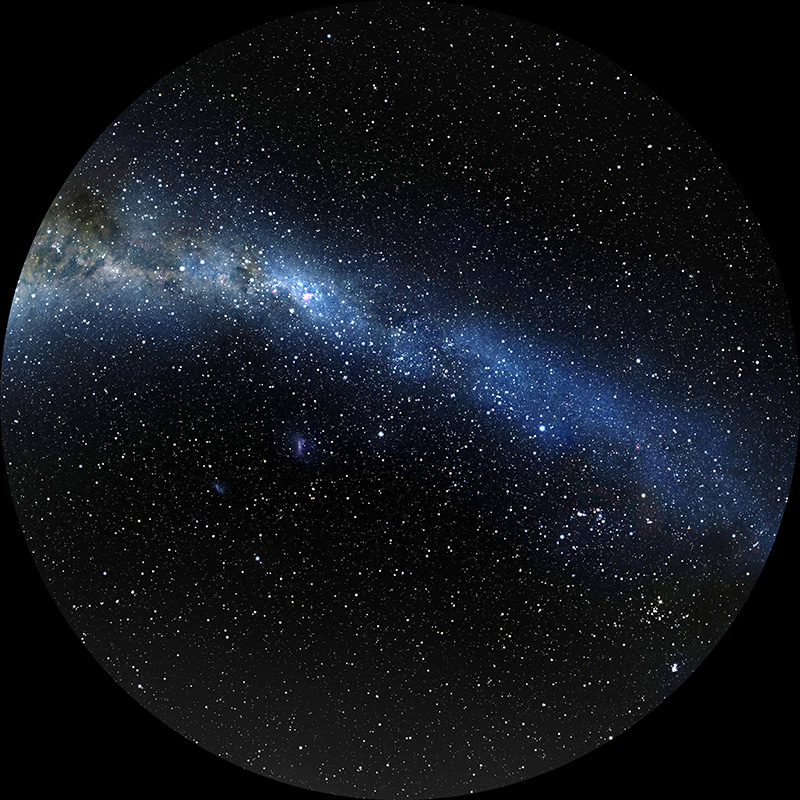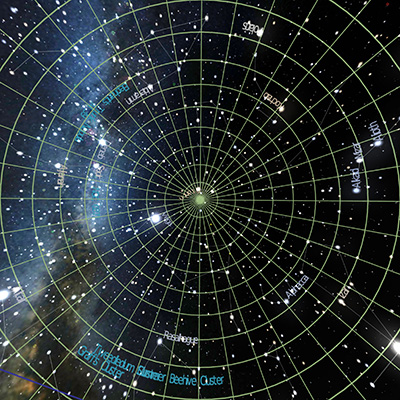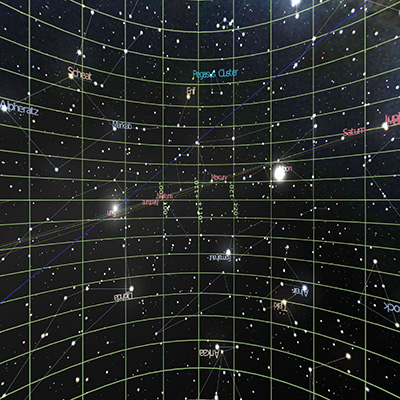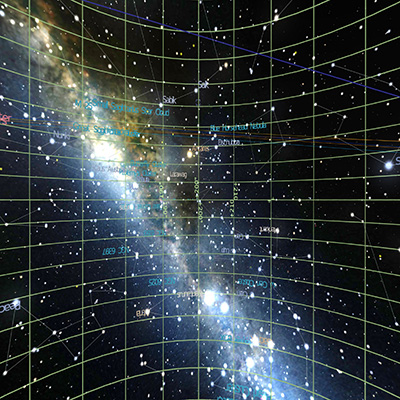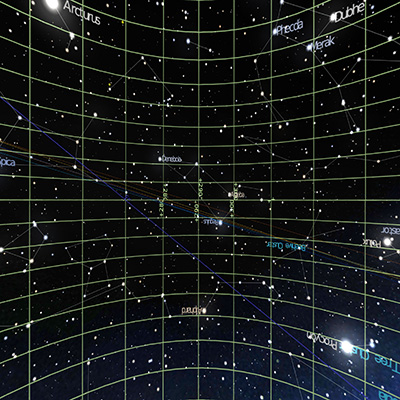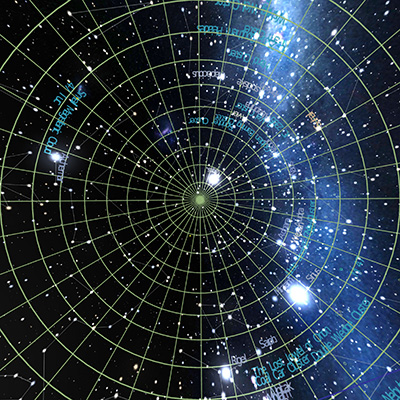Creating equirectangular projections using StellariumWritten by Paul BourkeMarch 2020
See also: Create equirectangular projections using Celestia Ukrainian translation by David Diaz.
The following documents how one might create equirectangular projections from Stellarium. Why might one want to do this? Equirectangular projections are a convenient image format for presenting 360x180 data online or through head mounted displays. It is one of a few formats that records everything visible from a point in space. The other major format are cube maps and they can be created from equirectangulars, although granted it isn't the optimal pipeline. The general procedure is to use the 180 degree fisheye projection already available in Stellarium along with the screen capture function. One captures two 180 degree fisheye projections with the virtual camera for the second image pointing in exactly the opposite direction to the first image, while maintaining the same "up" or "right" vector. The following are two such fisheye images, noting that the circular crop has been added here to illustrate the fisheye nature. In reality one does not use a circular crop because it would generally result in a hairline defect at the seam.
These two fisheyes are combined using the authors dualfish2sphere utility, that was designed initially to stitch together two fisheyes from a dual lens 360 camera. The resulting equirectangular is shown below. 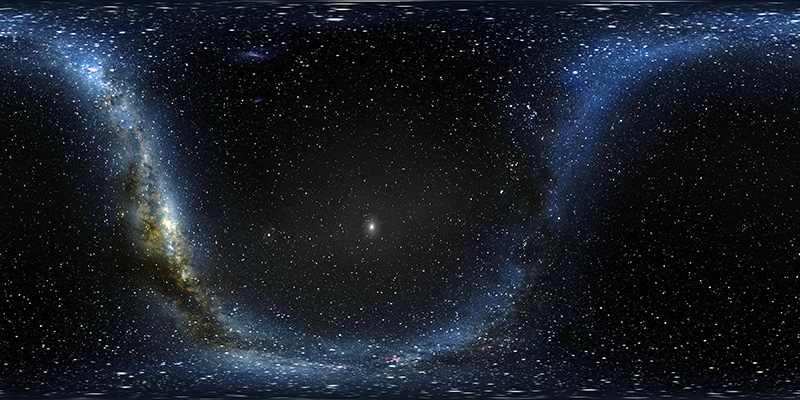 Interactive version
Some further examples. 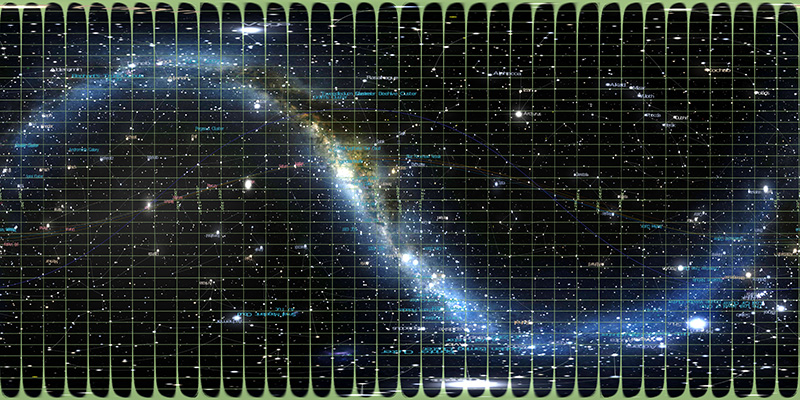 Interactive version
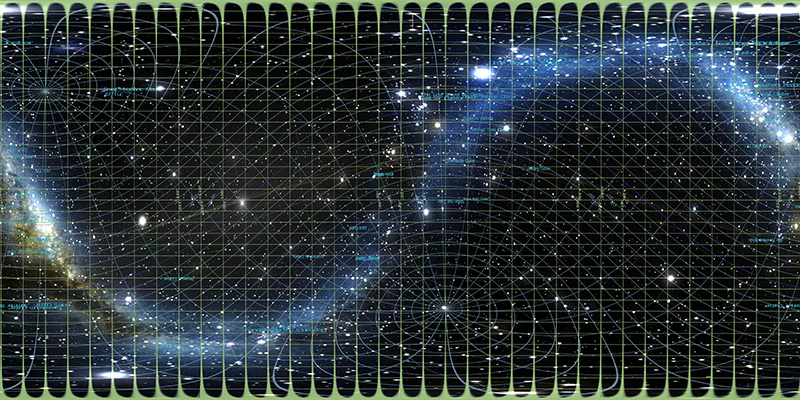 Interactive version
Example of cube map derived from the equirectangular.
Some Stellariums hints.
Please note that at the time of writing the "cylinder" camera type, besides being an incorrect description for the projection, doesn't create correct equirectangular images. Specifically there are wraparound issues for many features across the left and right edge (0 to 360 transition) of the image, and there are other errors that occur at the two poles. |
